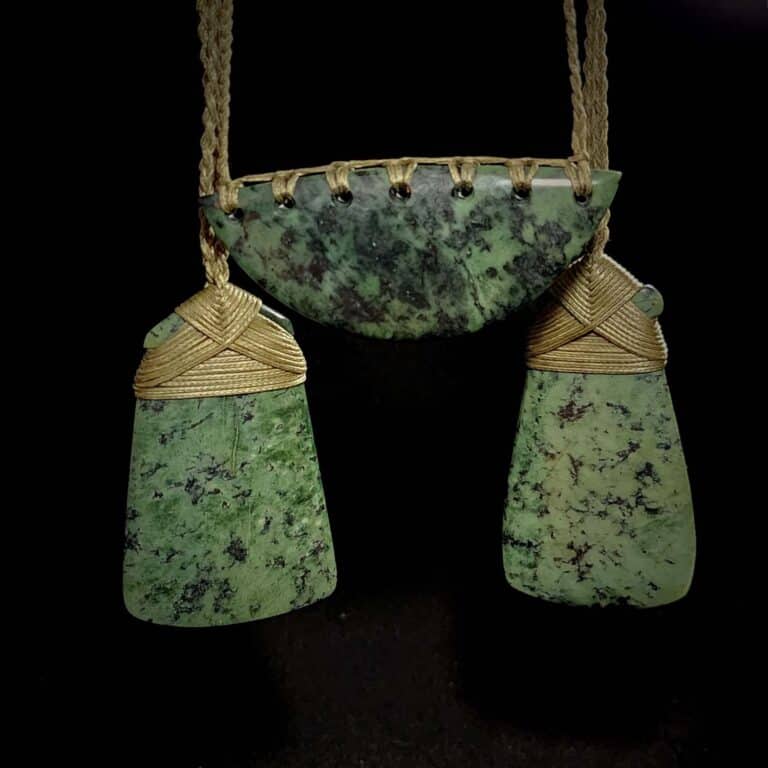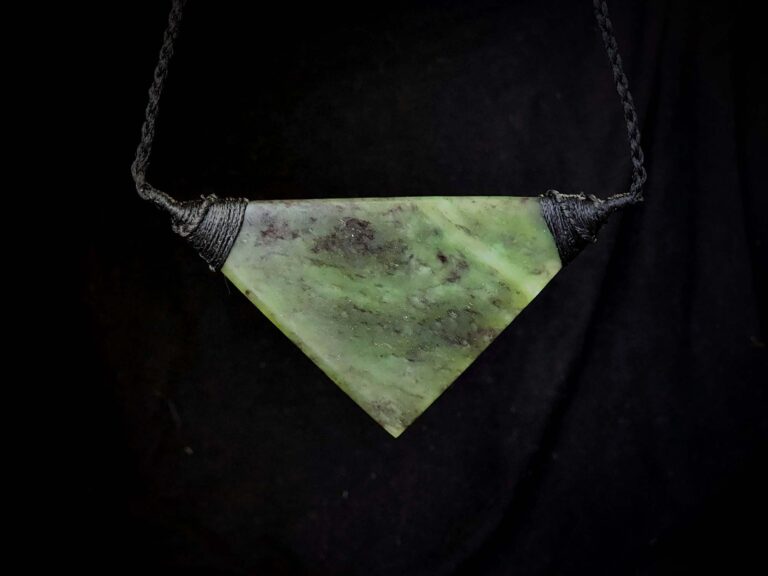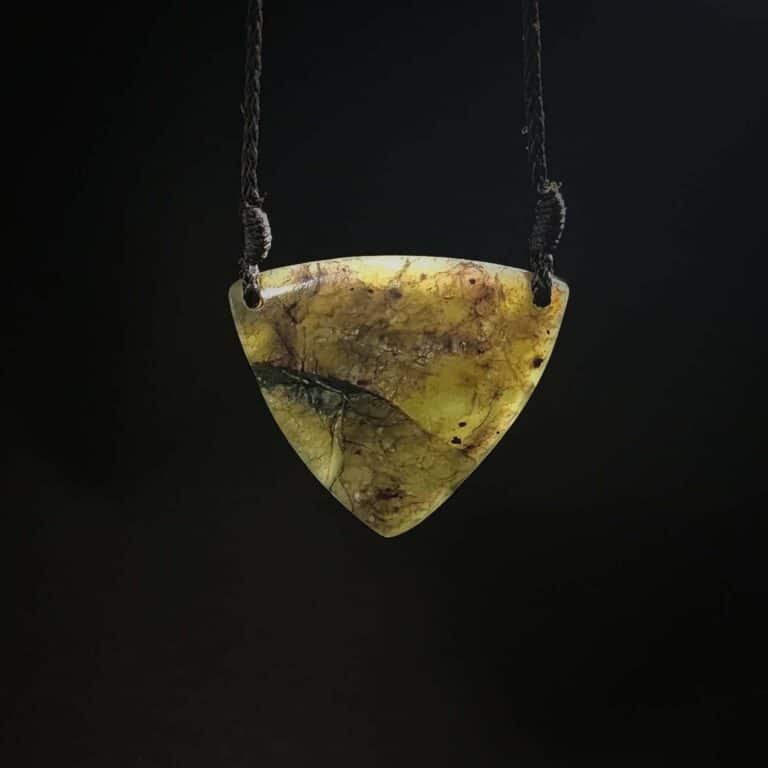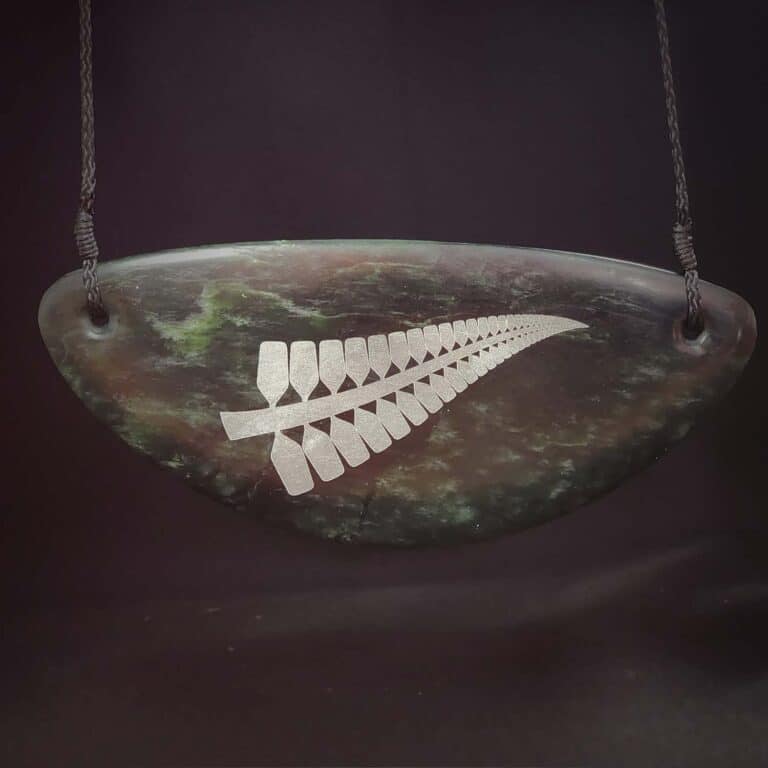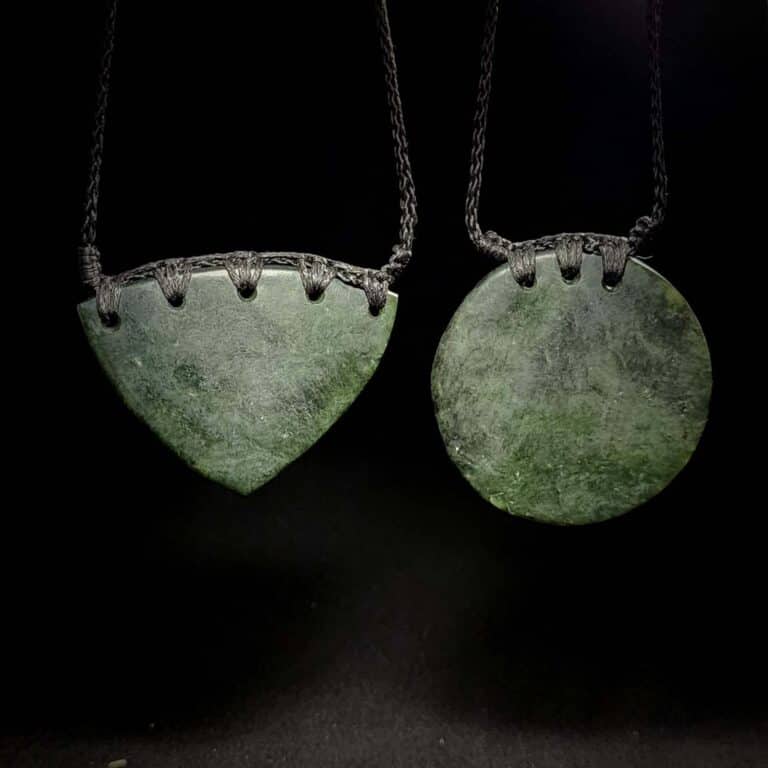Te Whakaata o te Onepū
I found this stone myself, a smooth pebble of Serpentine Pounamu washed up on a beach here in Aotearoa. After carrying it home and cutting into it, I discovered rich layers of green and earthy brown inside, framed by a textured orange rind. I carved it into a Kōuma 8cm by 6cm, a traditional breastplate design, and finished it with a three-hole ringbolt lashing in brown, using a black braided cord to echo the dark outer rind.
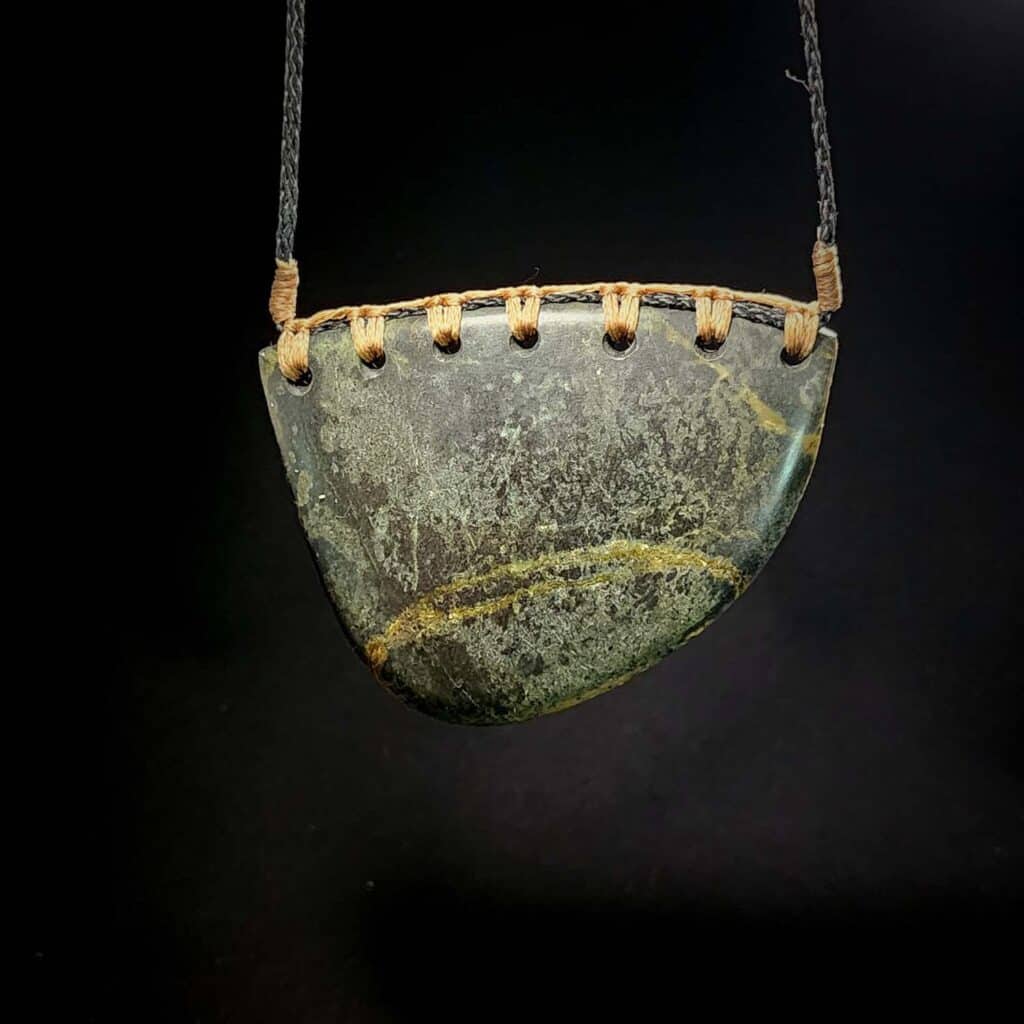
The name of this taonga, Te Whakaata o te Onepū, reflects its origin and appearance. The rind carries the rough texture and colouring of sand, while the polished face offers a reflection—both literal and symbolic. It’s a reminder to look beneath the surface, to remember where we come from, and to carry our inner strength quietly.
I filmed the full process of transforming this stone – from the beach to the finished taonga – and you can watch that on my YouTube channel.
Kōuma refers to the sternum – the central bone of the chest. A Kōuma breastplate rests close to the heart, symbolising protection, inner strength, and connection to the ancestors. The coolness of the Pounamu against the chest serves as a reminder of grounding, calm, and strength through challenge.
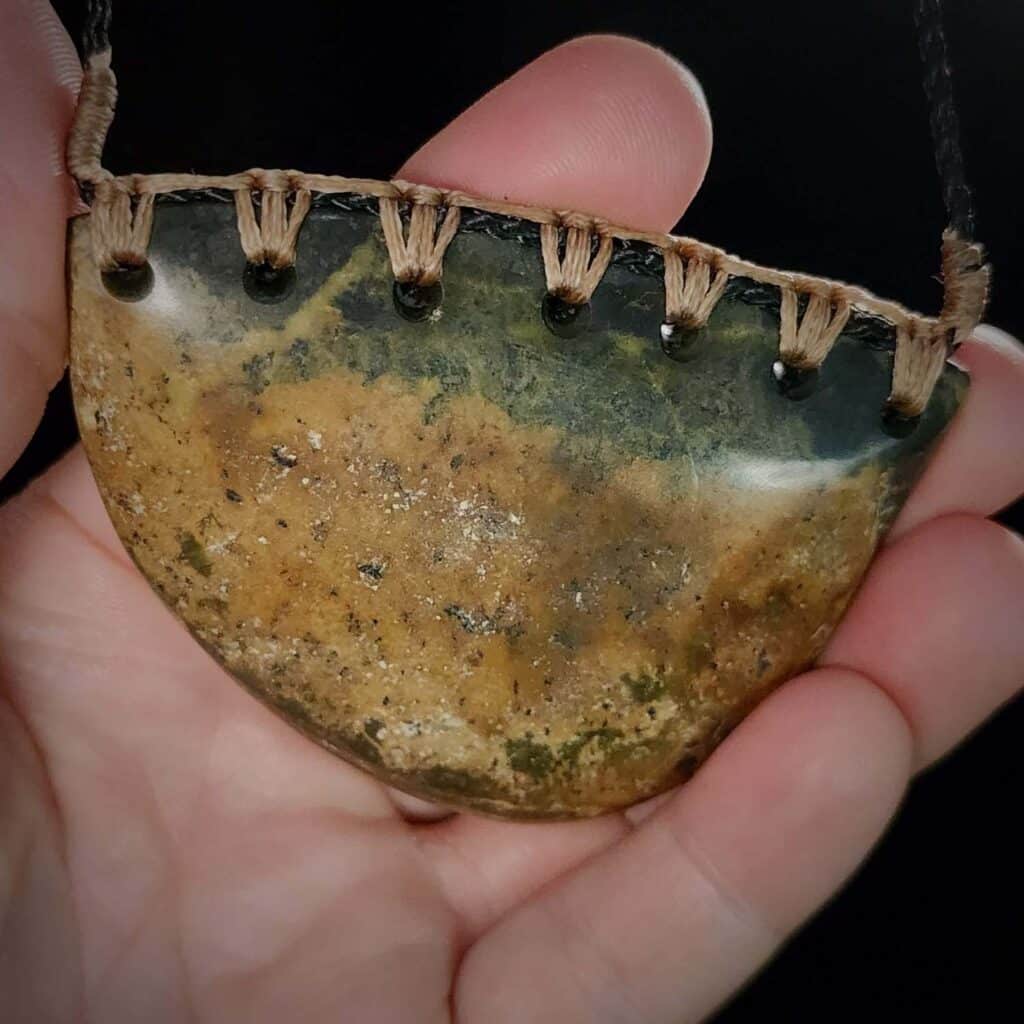
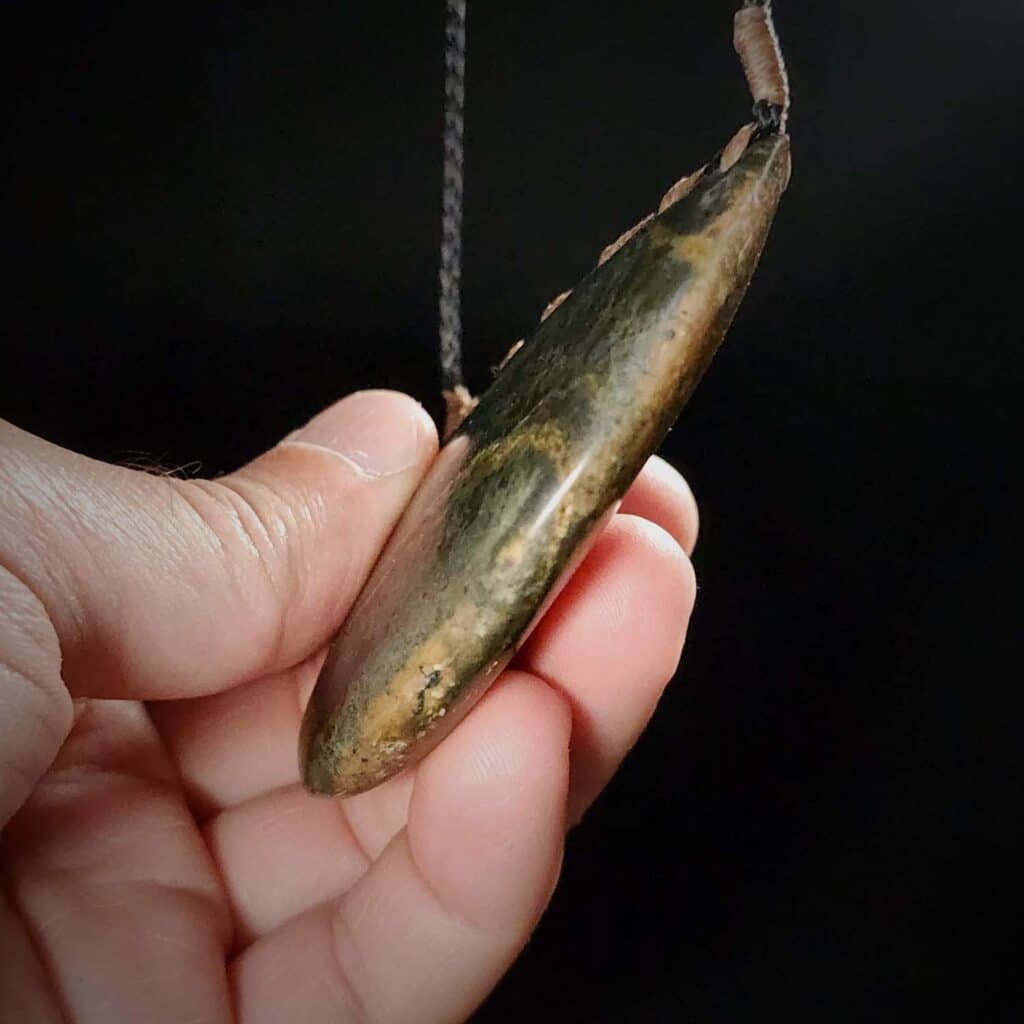
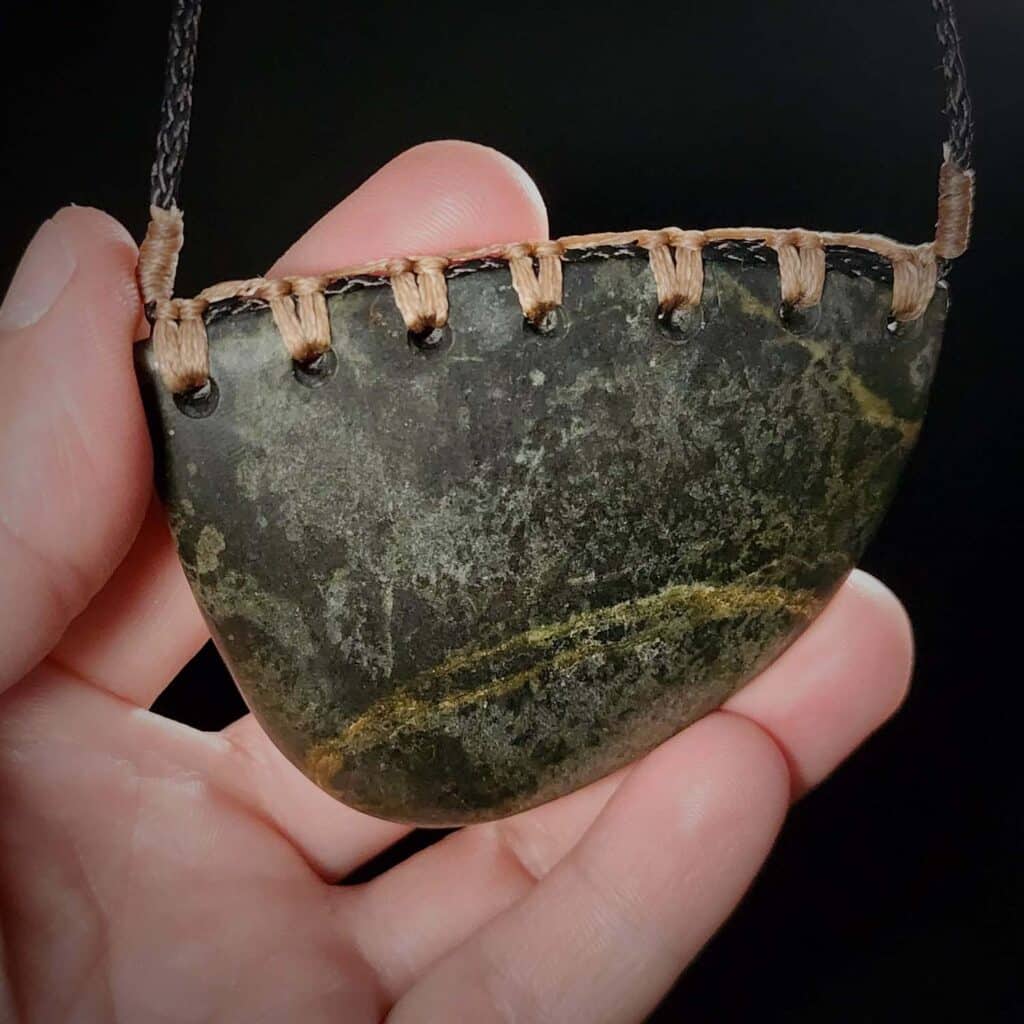
Although Serpentine is a different mineral from nephrite, in New Zealand it is still classified as Pounamu. It holds cultural and spiritual value and is protected under the same laws. This piece reminds me how much value can lie beneath the surface of something humble and overlooked, like a pebble on the beach. It connects directly to the land, the sea, and to those who take time to notice what others might walk past.
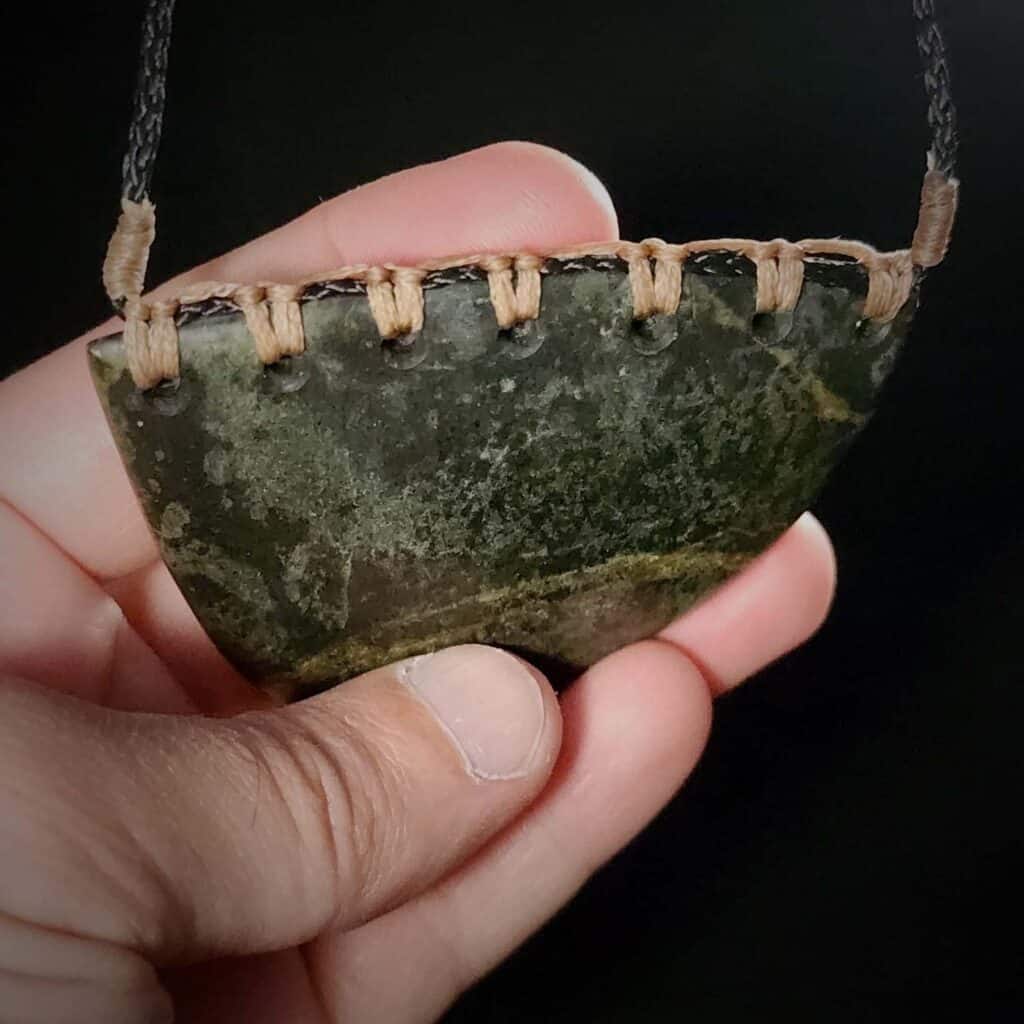


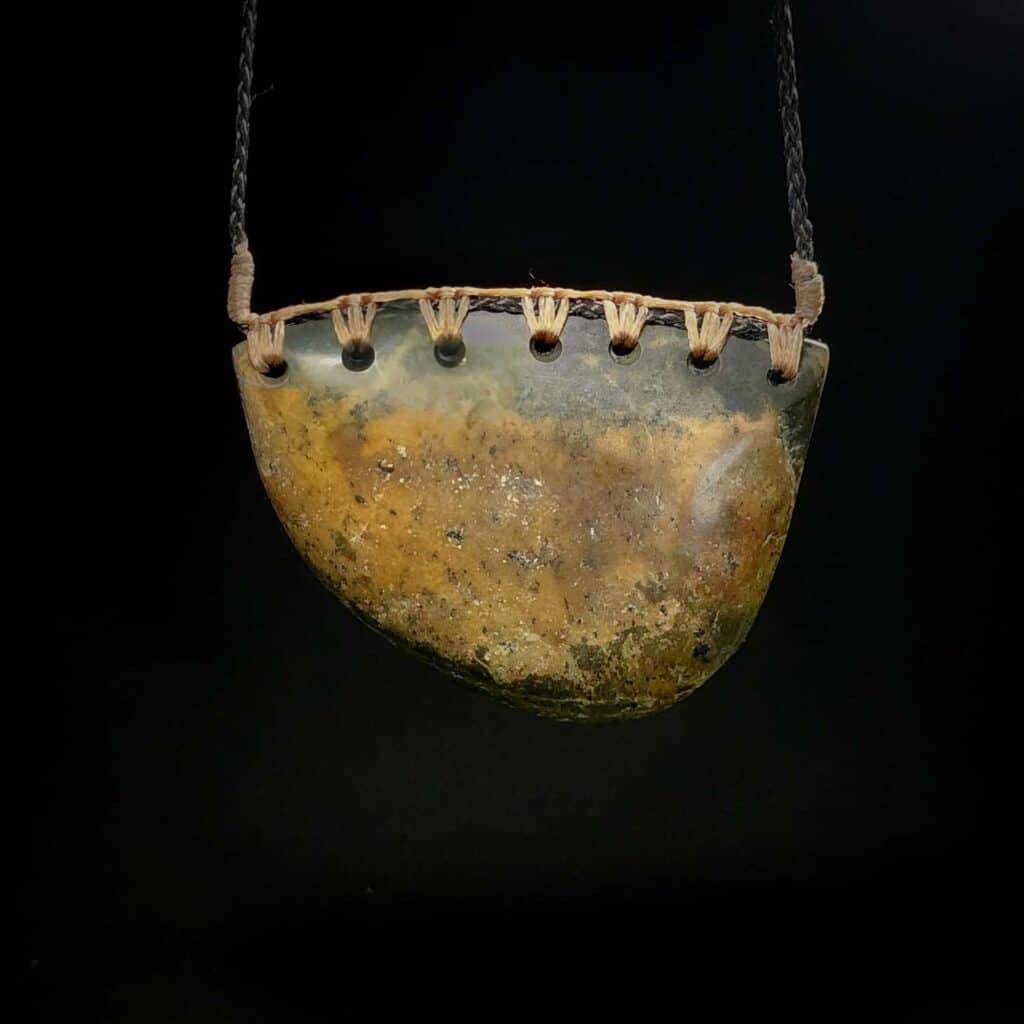

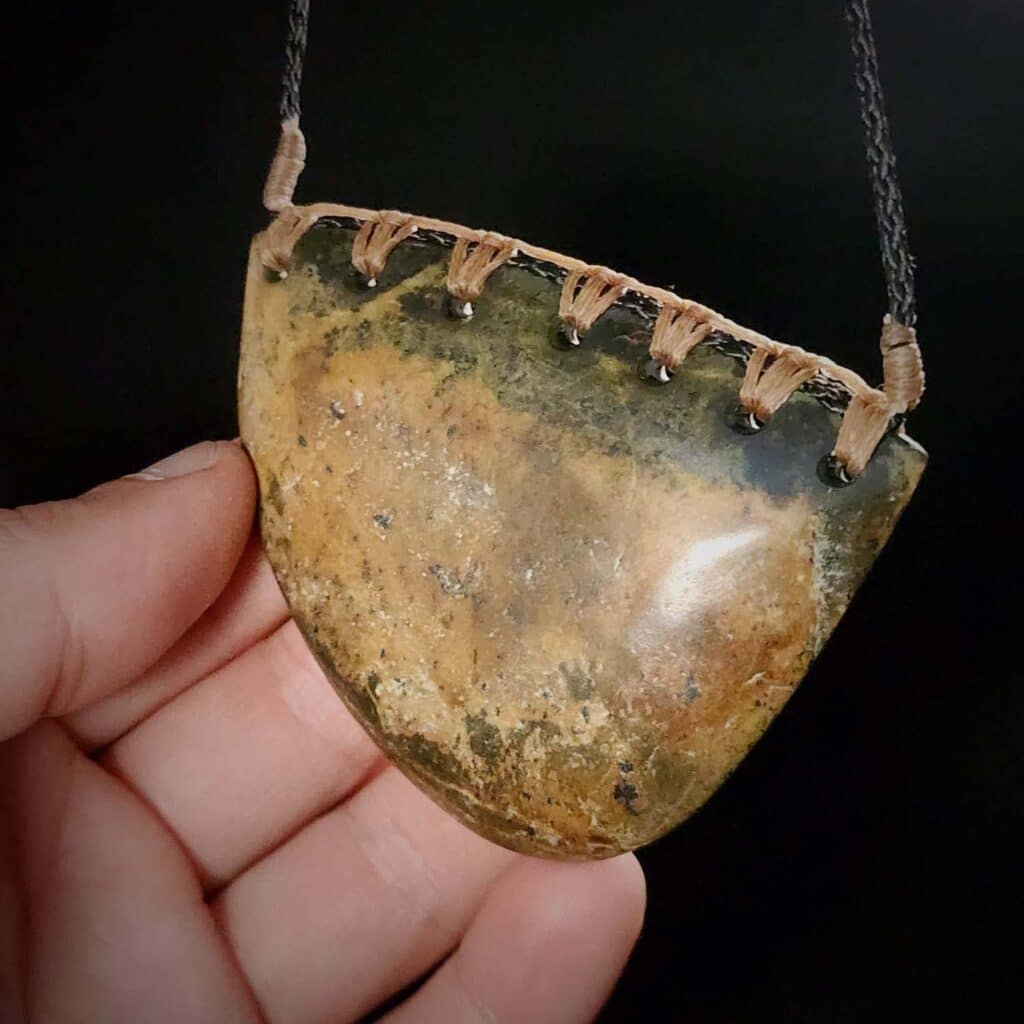


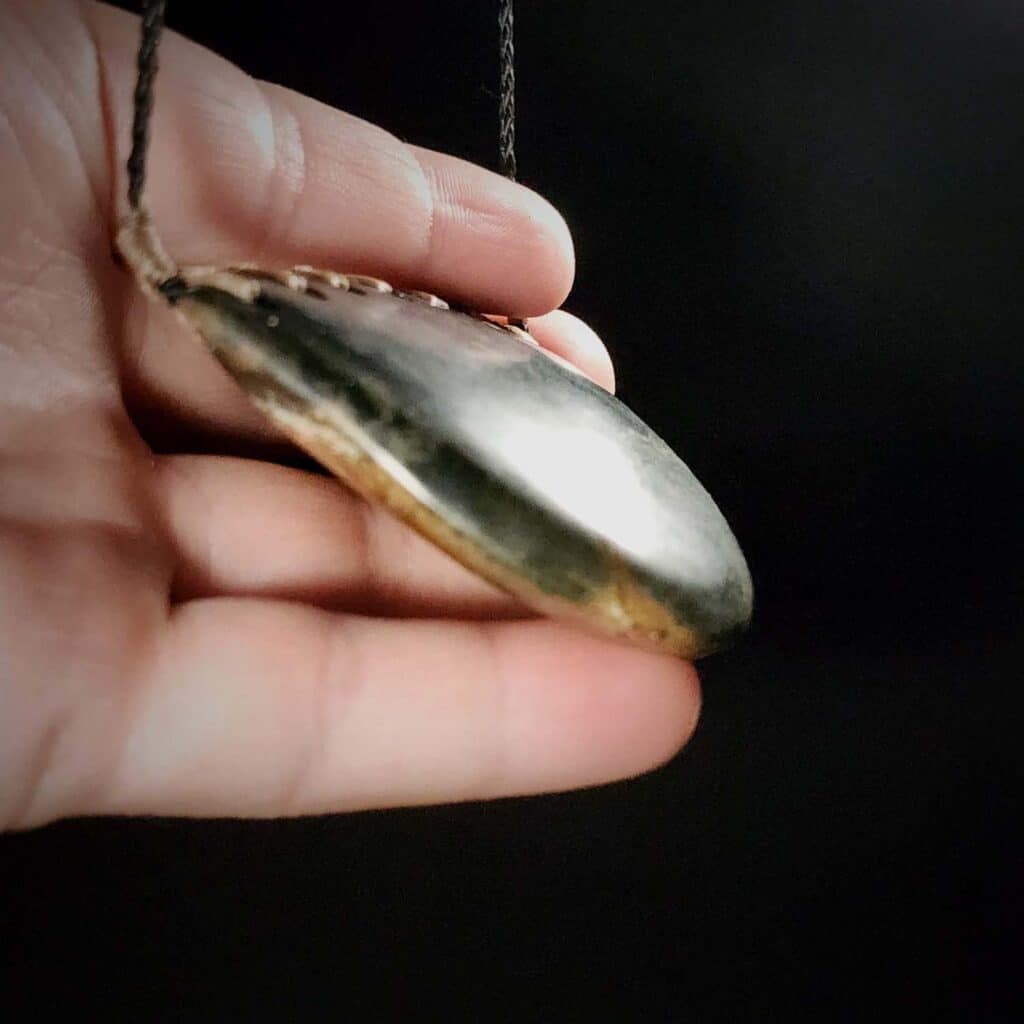
This taonga started as a simple beach stone, but through careful work it became something with deeper meaning. Te Whakaata o te Onepū is about seeing the value in what’s easily overlooked, and about carrying strength close to the heart. For me, it shows how something found in a quiet moment can become a powerful reminder of resilience and connection.


